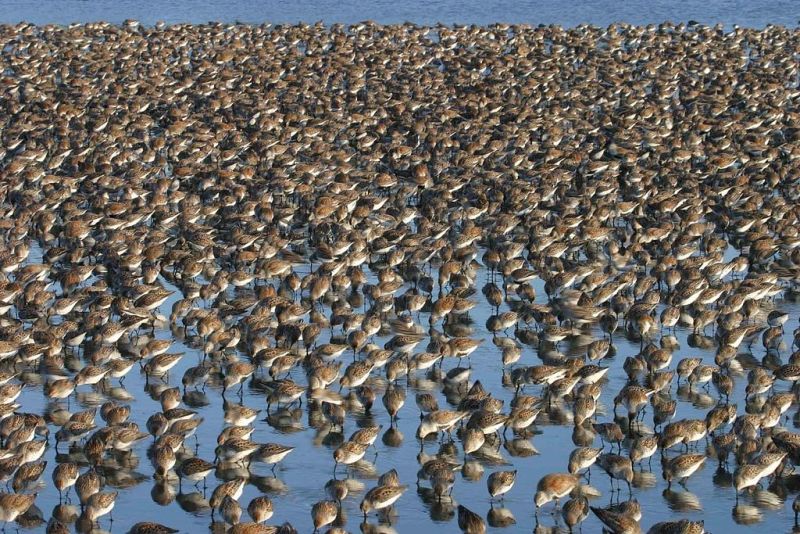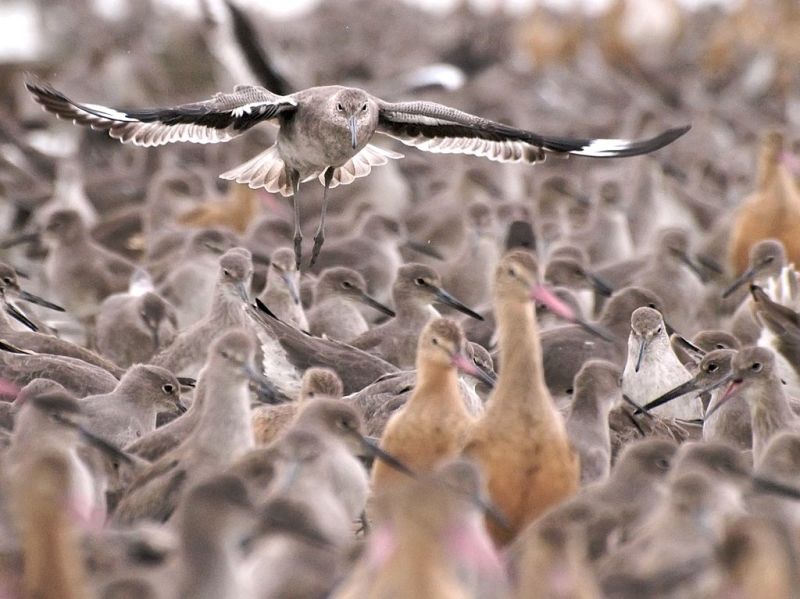This is one of the riskiest times of life for migratory shorebirds like willets, dunlin, marbled godwits and others. As these birds migrate along the Pacific Flyway, they normally stop to rest and refuel at marshes, lakes and other waterways — after migrating thousands of miles from the north. Some come from as far as the Arctic circle with migration paths established for thousands of years, particular to their species.
But this year, birds migrating through northern California’s coast range and the Central Valley are finding dry areas where they expected lush wetlands.
“Hopscotching on their migration from wetland to wetland, drought and development have decimated many of their historic refuges,” says Cindy Margulis, Executive Director of Golden Gate Audubon. “It requires birds to seek new resting and refueling areas, forcing them to fly further in search of food and water.”
Shorebirds that fly along the coastline seeking refuge have arrived early to East Bay salt marshes; they normally aren’t here in large numbers until the end of August or even early September.

There’s no evidence, though, that birds that normally migrate through California’s interior, down the Central Valley, have winged their way over to the Bay, says Melissa Pitkin, Director of Education and Outreach for Point Blue Conservation Science.
